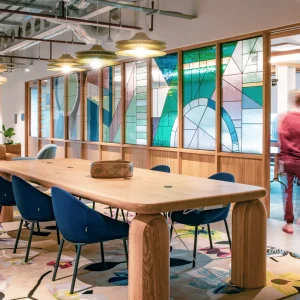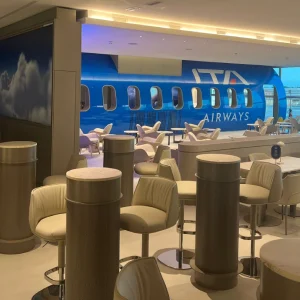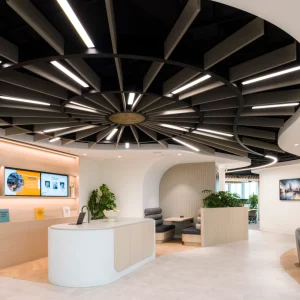Hotels provide a service on many levels. At their most basic, they should offer a safe and comfortable place to stay the night, with enough facilities on hand to carry on with one’s business – whether that is actually business, or pleasure – without hindrance or disruption.
But many establishments strive to provide so much more, to meet the requirements of sophisticated and demanding guests. They are elegant, and sumptuous, sometimes with impeccable service and matchless fittings and furnishings.
They can also be faceless, providing a service and fulfilling a function without making a statement other than luxurious. It is what many guests require and are happy with, preferring a top-notch yet anonymous establishment that has all the personality of a mannequin, albeit draped in jewels and haute couture.
Then there is that singular group of hotels, the destination hotels, that are all personality, where a stay is an experience in itself. Small but by no means mean, these boutique hotels stand out with their vibrant, individualistic, often quirky, design.
They are one-offs, even when they are part of a group, due to the lavish attention to bespoke detail and the individuals involved in their design, be it the owner or a designer, sometimes with the two working in collaboration with a shared design philosophy.
This was indeed the case in myhotel Brighton, where the founder of the myhotel group, Andy Thrasyvoulou, combined forces with celebrated designer Karim Rashid to share an aesthetic ideal and create in this new-build what Thrasyvoulou describes as ‘a hotel where Freddie Mercury might have met the Maharishi’.
Individual inspiration worked its magic in the King’s Cross area of London, for Rough Luxe. In this terraced Victorian house, architect, designer and gallery curator Rabih Hage has combined art and hospitality to produce a work of art in which you can stay the night.
While only some of the nine guest rooms are en suite, this inconvenience of conveniences is overshadowed by the sheer artistry of the place, from what Hage terms as an ‘archaeology of interior design’ in the retained partial layers of wallpapers, original light fittings and worn door furniture to the placement of contemporary art, such as the Anger Release Machine. This looks like a vending machine, but instead of dispensing bags of crisps and chocolate bars sends pieces of old crockery to a satisfyingly smashing end.
In contrast, citizenM at Amsterdam’s Schiphol Airport is a sum of its parts – with each of the identical l rooms literally being shipped in from the group’s own prefabrication factory and fitted together to make the hotel. With stylish design interiors by Dutch practice Concrete Architecture Associates, utilising top-class fittings and Vitra furniture, the pods create a unique yet affordable design-led destination hotel.
Sir Richard Branson has also gone back to basics, establishing a camp of tents in the Atlas Mountains in Morocco. Any similarity to your days of scouting start and end with the canvas over these spectacularly designed Berber-inspired dwellings, however, filled with beautifully crafted furnishings and sumptuously appointed.
In San Francisco, fans of film legend Alfred Hitchcock have a treat in store at Hotel Vertigo, which is very much at home within the Personality Hotels group. With actual references to the movie Vertigo in the hotel’s building – it used to be the York and figured in the story as well as being home to the film’s stars during shooting – the newly debuted Vertigo has its interiors carefully crafted to reflect its movie connections while embedding them firmly in a coherent and contemporary design aesthetic.
Equally unique, thanks to the inspired design of owner Jason Hunt, is the latest edition to the Crazy Bear group. With two other individualistic properties in London and Oxford, Crazy Bear has taken a 500-year-old former coaching inn in the Buckinghamshire town of Beaconsfield, restored it and filled it with flamboyant and luxurious design. It is uncompromising in its detail, with 24-carat-gold leaf walls, theatrical accessories and the unusual use of materials, including leather, which been estimated to cover some 85 per cent of all the interior surfaces.
Clearly all these hotels are a place for the traveller to rest their head for the night. But on its own what a shame that would be, when there is so much more to experience in these extravagant, intriguing, flamboyant and quirky destinations in their own right.
Berber tents at Kasbah
Tamadot, Morocco
Designer: Real Studios
Camping was never so luxurious
The nomadic Berbers of North Africa are the influence behind Sir Richard Branson’s latest exclusive hotel retreat.
For a unique and luxurious taste of the Berber lifestyle, interior design practice Real Studios has created a string of tented suites, on the side of the Atlas Mountains in Morocco. They are in the grounds of Kasbah Tamadot, the 24-room former home of Italian antiques dealer and interior designer Luciano Tempo, and part of the Virgin Limited Edition collection.
While traditionally Berber in their styling, the tented suites have only luxury appointments, including private plunge pool, state-of-the-art A/V systems and power showers.
Full-height doors and windows have been inserted into the outer walls of the suites so that the views of the surrounding mountain scenery remain unobscured wherever the observer is, whether that be the bed, sofa or bath.
Colours from the landscape have influenced the design colour palette, with shades of sand, red from the Atlas Mountains and blue from the North African morning sky captured in desert pink, ochre and pale turquoise.
Antiques and hand-carved wooden furniture, softened and textured with fine fabrics, cushions and neutral linens furnish the suites. Traditional crafts of embroidery, henna dyeing, quilting, rug making, and inlay with mother-of-pearl and brass are used extensively.
Fabrics and upholstery in simple colours balance the detailing on furniture, carved beams, metalwork and ceramics, while patterns and shadows from traditional North African chandeliers and brass lanterns create an exotic ambience.
Real Studios design director Yvonne Golds sourced carved doors and panels, antique chairs, tables and ceramics from local markets and warehouses, and commissioned local craftspeople to create bespoke pieces for the suites, which offer a happy marriage of traditional and ancient craftwork and modern luxury.
Crazy Bear,
Beaconsfield
Designer: Jason Hunt with Alma
Leather look
One of the most original and opulent interiors is in the newly opened Crazy Bear boutique hotel, where more than 50 different types of leather has been used.
In the 10 individually designed bedrooms, two restaurants, private dining rooms and bars, in this 500-year-old fully restored former coaching inn, more than 1,000 sq m of fine leathers have been pressed into service in a dazzling array of uses.
While the use of leather in the hotel’s banquette and booth seating, as sofa and chair upholstery comes as no surprise, how about as cladding on walls, ceilings, and doors, as flooring, as hand rails, desk tops, and on wardrobes, inside and out?
It appears in the bathrooms, as curtains in laser-cut Nubuck, as linings to display units, in dining areas as menu holders, placemats, coasters and tablecloths, covering dustbins, and on bed frames and headboards.
In the design and fit-out of the hotel, the belief of leather specialist Alma that leathers can replace traditional coverings to create sumptuous natural surroundings, add beauty, depth and warmth to any space, has been emphatically borne out.
Combining flair with traditional expertise and cutting-edge techniques, hotel owner Jason Hunt and Alma have redefined how leather is used. One bedroom, for example, is almost exclusively in black leather: cladding on the sloping attic ceiling, with a black mirror insert at the apex; leather croc-print floor tiles, and black leather insets to a heavily ornate silvered headboard and footplate. A low-level sofa is in a patterned leather to match the flooring.
Another bedroom, also created out of a roof space, has exposed beams and is rich and warm looking with exposed red brickwork and red leather inserts between the beams. The floor is covered in a snakeskin-print leather tile in tones of bright red.
In complete contrast is a handrail in the hotel, covered in a rainbowcoloured snakeskin print, while in a private dining space a single piece of smooth leather is a covering for a 3mlong communal dining table.
It is estimated that some 85 per cent of surfaces at Crazy Bear are covered in leather, made possible by the material’s flexibility and durability and making a unique and exotic design statement.
Hotel Vertigo,
San Francisco
Designer: Thomas Schoos Design
Homage to Hitchcock film Vertigo
The legend of film director Alfred Hitchcock not only lives on in his classic movies but now also in one of the latest additions to the San Francisco’s collection of character hotels, Hotel Vertigo.
As the earlier York Hotel it was the ‘Empire Hotel’ in Hitchcock’s film Vertigo, and relaunched as Vertigo at the beginning of this year as the film’s release reached its 50th anniversary.
Movie-related influences with a decidedly modern twist mingle with contemporary design to create a landmark hotel now with a unique and deluxe offer.
A mix of vibrant colours and eclectic furnishings make Hotel Vertigo hip while remaining elegant. It is San Francisco in a nutshell.
Just off bustling Union Square in charming residential Nob Hill, the interior design of Hotel Vertigo was led by award-winning Thomas Schoos Design, of Los Angeles, which has created interiors for some of the USA’s most iconic restaurants and nightclubs, such as Koi, Citizen Smith and TAO.
After guests are welcomed at the reception desk with Madeleine cookies (after the Kim Novak character), the Vertigo Up lift takes guests to their rooms, which are styled in orange, aubergine and white.
Movie-related features in the bespoke-designed guestrooms include Hitchcock-favoured high wingback chairs, now in vibrant glossy orange leather with the word Vertigo on the seat, and contemporary original wall art that reflect the ‘swirl’ symbol of the film.
The second-floor meeting room is called The Ledge (remember the tower scenes) with views to the lobby below through expansive internal windows.
The five Hitchcock suites, named after characters from the movie, have been individually created around the character, while Suite 13 features 13 discreet film clues that only dedicated fans will recognise.
Cameo appearances of Hitchcock are made throughout the hotel, just like the director did in his own films. And for those whose movie thirst is unquenchable, complimentary in-room showings of Vertigo are available round the clock.





